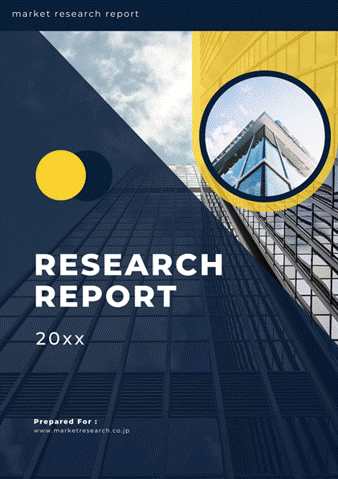 | • レポートコード:D0-MOR-AP1415 • 出版社/出版日:Mordor Intelligence / 2020年4月 • レポート形態:英文、PDF、60ページ • 納品方法:Eメール(受注後2-3営業日) • 産業分類:農業 |
| Single User | ¥555,000 (USD3,750) | ▷ お問い合わせ |
| Team User | ¥629,000 (USD4,250) | ▷ お問い合わせ |
| Corporate License | ¥1,036,000 (USD7,000) | ▷ お問い合わせ |
• お支払方法:銀行振込(納品後、ご請求書送付)
レポート概要
| 本調査レポートは、トウモロコシのヨーロッパ市場について調査・分析した資料で、トウモロコシの市場概要、動向、セグメント別市場規模、競争状況、企業情報、市場機会分析などで構成されています。 |
The maize market in Europe is estimated to grow at a CAGR of 3.8% in the forecast period 2020-2025.
The leading maize producing countries in Europe are Ukraine, France, Italy, and Romania. Ukraine alone accounts for almost 10% of the global maize crop. Even though the EU has the largest market share in the global maize export, it imports 13% of the total maize produced globally. Ukraine is the largest exporter of maize in Europe; it exports around 46% of its total production to the other European countries. Such a huge dependence on Ukrainian maize supply can, at times, prove detrimental for the other European countries. The recent political instability in Ukraine and the ban on Ukrainian trade has created a shortage of maize supply in Europe. France utilized 50% of its maize production as pig feed and exported the rest to the other European countries.
Key Market Trends
Increased Demand For Animal-based Protein Sources Driving the Market
The increasing pressure on the livestock industry has intensified in the recent years, to meet the rising demand for meat and high-value animal protein. Population growth, rising incomes in developing nations, and urbanization have led to a surge in the global livestock consumption.
The levels of income and consumption of animal protein have been found to be directly correlated to the consumption of milk, meat, and eggs, which is increasing at the expense of staple foods.
Maize is one of the key ingredients of almost every type of compound feed for animal types, such as ruminants, poultry swine, and aquaculture. Hence, the rising demand for animal-based protein sources is likely to drive the trade and the market for maize at a global level.
Maize Prices in Europe are Likely to Fall in the Future
The maize prices are expected to fall in the future. The reason for the low prices of maize is the fall in the price of crude oil. This is because the biofuel production from maize has fallen due to the availability of crude oil at a lower price. This has affected the overall maize prices in Europe.
There are some other factors that determine maize prices in Europe. The EU controls the policies and regulates trade in Europe. When the commodity price of maize fell around the world, the EU protected its small and marginal farmers by imposing an import duty of EUR 5.32 per metric ton. This step by the EU restricted the maize imports from the Rest of the World. European farmers have small farm holdings and the cost of cultivation of maize is high compared to the Americas.
Reasons to Purchase this report:
– The market estimate (ME) sheet in Excel format
– 3 months of analyst support
1 INTRODUCTION
1.1 Study Assumptions & Market Definition
1.2 Scope of the Study
2 RESEARCH METHODOLOGY
3 EXECUTIVE SUMMARY
4 MARKET DYNAMICS
4.1 Market Overview
4.2 Market Drivers
4.3 Market Restraints
4.4 Value Chain Analysis
4.5 Porter’s Five Forces Analysis
4.5.1 Threat of New Entrants
4.5.2 Bargaining Power of Buyers
4.5.3 Bargaining Power of Suppliers
4.5.4 Threat of Substitute Products
4.5.5 Competitive Rivalry
4.6 PESTLE Analysis
5 MARKET SEGMENTATION
5.1 Ukraine
5.1.1 Production Analysis
5.1.2 Consumption Analysis, Market Value and Price Trend
5.1.3 Import Market Analysis (Volume and Value)
5.1.4 Export Market Analysis (Volume and Value)
5.1.5 Price Trend Analysis
5.2 France
5.2.1 Production Analysis
5.2.2 Consumption Analysis, Market Value and Price Trend
5.2.3 Import Market Analysis (Volume and Value)
5.2.4 Export Market Analysis (Volume and Value)
5.2.5 Price Trend Analysis
5.3 Italy
5.3.1 Production Analysis
5.3.2 Consumption Analysis, Market Value and Price Trend
5.3.3 Import Market Analysis (Volume and Value)
5.3.4 Export Market Analysis (Volume and Value)
5.3.5 Price Trend Analysis
5.4 Romania
5.4.1 Production Analysis
5.4.2 Consumption Analysis, Market Value and Price Trend
5.4.3 Import Market Analysis (Volume and Value)
5.4.4 Export Market Analysis (Volume and Value)
5.4.5 Price Trend Analysis
6 MARKET OPPORTUNITIES AND FUTURE TRENDS